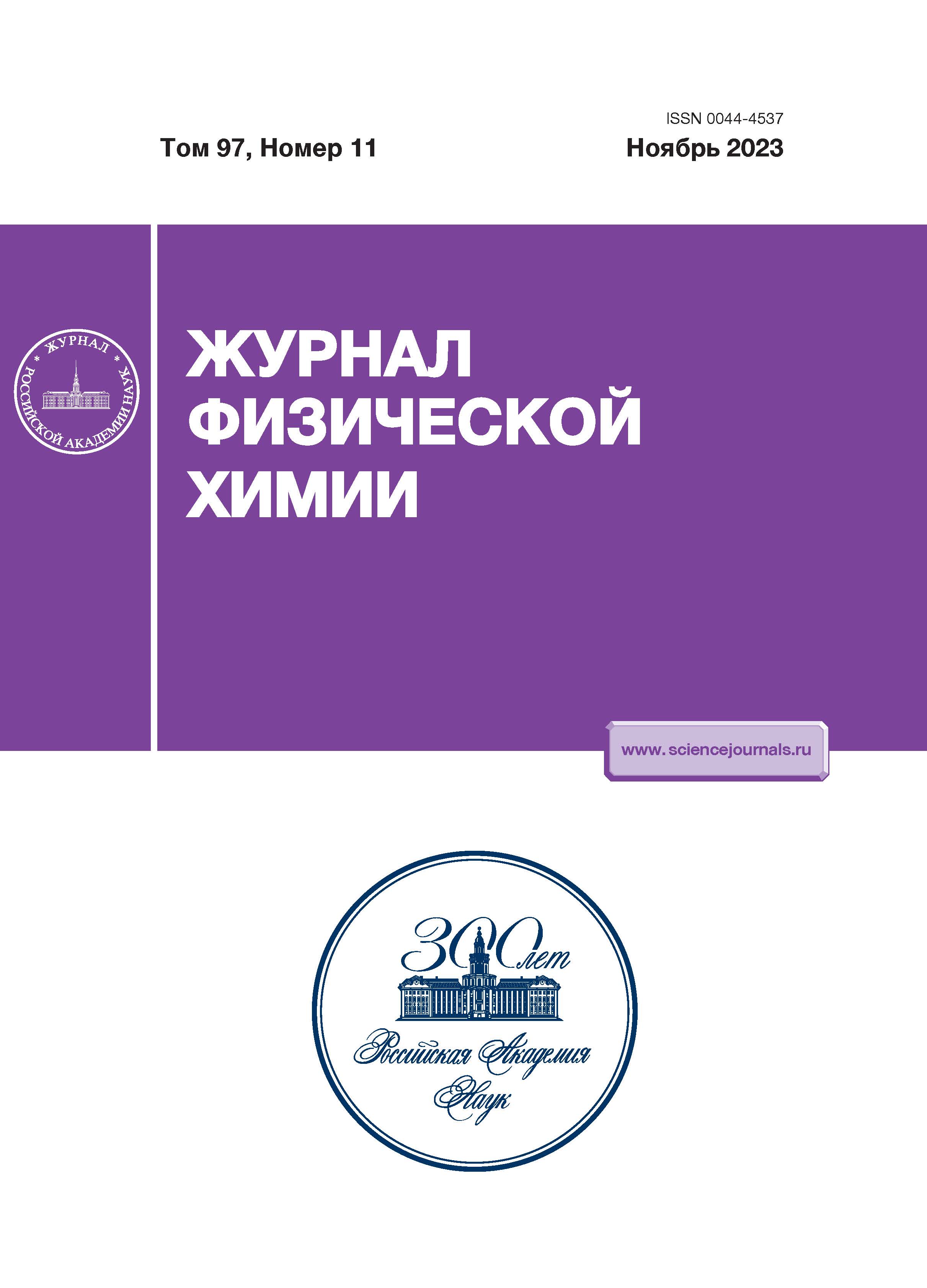New Approaches to Synthesizing Nanostructured Electrode Materials Based on Double Lithium and Cobalt Phosphates in Salt Melts
- Authors: Zharov N.V.1, Maslova M.V.1, Ivanenko V.I.2, Korneikov R.I.3
-
Affiliations:
- I.V. Tananaev Institute of Chemistry and Technology of Rare Elements and Mineral Raw Materials of the Russian Academy of Sciences Kola Science Center
- Tananaev Institute of Chemistry and Technology of Rare Elements and Mineral Raw Materials, Kola Scientific Center, Russian Academy of Sciences
- Tananaev Institute of Chemistry and Technology of Rare Elements and Mineral Raw Materials (separate subdivision), Kola Scientific Center (Federal Research Center), Russian Academy of Sciences, 184209, Akademgorodok, Apatity, Murmansk oblast, Russia
- Issue: Vol 97, No 11 (2023)
- Pages: 1647-1654
- Section: PHYSICAL CHEMISTRY OF NANOCLUSTERS, SUPRAMOLECULAR STRUCTURES, AND NANOMATERIALS
- Submitted: 27.02.2025
- Published: 01.11.2023
- URL: https://rjeid.com/0044-4537/article/view/669176
- DOI: https://doi.org/10.31857/S0044453723110365
- EDN: https://elibrary.ru/EJUDWZ
- ID: 669176
Cite item
Abstract
A new and highly efficient way of obtaining finely dispersed LiCoPO4 powder is developed with a given morphology from ammonium substituted precursor NH4CoPO4⋅H2O in a lithium nitrate melt. It is shown that the morphology of the obtained product is determined by the morphology of the used precursor and depends on the physicochemical conditions of its preparation. The obtained LiCoPO4 and its precursors are characterized by means of XRD, SEM, and BET. Electrochemical tests show the resulting powder is electrochemically active. Cathode material based on the obtained LiCoPO4 shows a high specific discharge capacity of 110 mA h/g at a current density corresponding to a charge/discharge rate of 1C, due to the high dispersion and lamellar morphology of the particles of the synthesized powder. The proposed procedure is characterized by the speed of obtaining the target product. It does not require the use of expensive equipment or additional stages of high-temperature crystallization and grinding, and can be scaled up to industrial use.
About the authors
N. V. Zharov
I.V. Tananaev Institute of Chemistry and Technology of Rare Elements and Mineral Raw Materials of the Russian Academy of Sciences Kola Science Center
Email: n.zharov@ksc.ru
Russian Federation, 184209, Apatity
M. V. Maslova
I.V. Tananaev Institute of Chemistry and Technology of Rare Elements and Mineral Raw Materials of the Russian Academy of Sciences Kola Science Center
Email: n.zharov@ksc.ru
Russian Federation, 184209, Apatity
V. I. Ivanenko
Tananaev Institute of Chemistry and Technology of Rare Elements and Mineral Raw Materials, Kola Scientific Center, Russian Academy of Sciences
Email: marmaslova@yandex.ru
Apatity, Russia
R. I. Korneikov
Tananaev Institute of Chemistry and Technology of Rare Elements and Mineral Raw Materials (separate subdivision), Kola Scientific Center (Federal Research Center), Russian Academy of Sciences, 184209, Akademgorodok, Apatity, Murmansk oblast, Russia
Author for correspondence.
Email: r.korneikov@ksc.ru
Россия, 184209, Мурманская обл., Апатиты, Академгородок, 26а
References
- Dixit A. // SMC Bulletin. 2019. V. 10. № 3. P. 151.
- Junxiang L., Jiaqi W., Youxuan N. et al. // Materials Today. 2021. № 43. P. 132.
- Jiangtao H., Weiyuan H., Luyi X. et al. // Nanoscale. 2020. V. 12. № 28. P. 15036.
- Клюев В.В., Волынский В.В., Тюгаев В.Н. и др. Катодный активный материал на основе литированного фосфата железа с модифицирующей добавкой марганца: Патент RU 2453950 C1 // Б.И. 2012. № 17. С. 9.
- Tolganbek N., Yerkinbekova Y., Kalybekkyzy S. et al. // J. of Alloys and Compounds. 2021. № 882. P. 160.
- Kanungo S., Bhattacharjee A., Bahadursha N. et al. // Nanomaterials. 2022. № 12. P. 32.
- Kraytsberg A., Ein-Eli Y. // Adv. Energy Mater. 2012. № 2. P. 922.
- Chen S.-P., Lv D., Chen J. et al. // Energy & Fuels. 2022. V. 36. № 3. P. 1232.
- Jugović D., Uskoković D. // J. of Power Sources. 2009. № 190. P. 538.
- Kirillov S.A., Romanova I.V., Lisnycha T.V. et al. // Electrochimica Acta. 2018. V. 286. P. 163.
- Karafiludis S., Buzanich A., Heinekamp C. et al. // Nanoscale. 2023. P. 1.
- Karafiludis S., Buzanich A.G., Kochovski Z. et al. // Crystal Growth & Design. 2022. V. 22. № 7. P. 4305.
- Choi D., Li X., Henderson W.A. et al. // Heliyon. 2016. V. 2. № 2. P. 000.
- Pinson M.B., Bazant M.Z. // J. Electrochem. Soc. 2013. V. 160. № 2. P. 243.
- Markevich E., Sharabi R., Gottlieb H. et al. // Electrochemistry Communications. 2012. № 15. P. 22.
- Truong Q., Devaraju M.R., Ganbe Y. et al. // Scientific reports. 2014. № 4. P. 39.
- Wu X., Meledina M., Tempel H. et al. // J. of Power Sources. 2020. № 450. P. 227.
Supplementary files


















